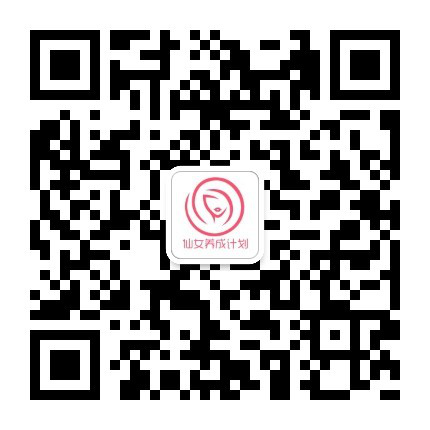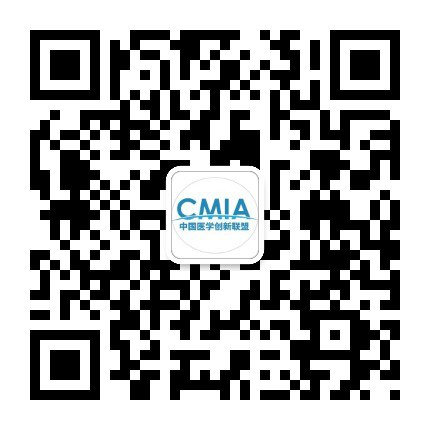过时的医疗保健结构、疾病护理范式和医学术语:循证、以患者为中心和跨专业护理的障碍
分享智慧
共同成长
Full text
Over the last several decades, health care has grown to expect that patient care is based in research and other compelling evidence, such as quality improvement data. Terms such as evidence-based medicine, evidence-based nursing, and evidence-based practice (EBP) are all common in verbal and written communications/language that practitioners, healthcare staff, and even patients use. This EBP movement has evolved, in part, due to seminal reports by the United States Institute of Medicine (now the National Academy of Medicine) in 2000 and 2001 that revealed the alarming rates of medical errors that cause harm and even death, and lead to significant costs. These reports called for urgent action for fundamental changes in health care. The 2001 Crossing the Quality Chasm report stressed that Americans must be able to expect care that is evidence-based and meets their needs. This report also highlighted that, whereas perfect care may be a long way off, care must get much better for the 21st-century and include new roles and responsibilities for patients and their families, who must become more aware, participative, and demanding of a care system that meets their needs.
Now, 20 years later, although we had been making progress in reducing errors and improving evidence-based care (Weiner-Lastinger, 2022), the COVID-19 pandemic with its adverse impact on clinician well-being and barriers that remain in the uptake of evidence, patient-centeredness, and team-based care have led to an increase in preventable complications (Weiner-Lastinger et al., 2022). Moreover, the pandemic revealed major gaps in health care including readiness for mobilizing evidence quickly, systematic and accurate dissemination of scientific findings, securing needed resources, and promoting team work that values all disciplines. While these gaps revealed vulnerabilities in healthcare systems and brought enormous disruption, they also highlighted the urgent need for change and innovation. As we now sit on the cusp of reverting back to “how things have always been done,” or paving a new path forward, we must choose the latter. Inherent in this new path forward is recognition and appreciation of the expertise each healthcare discipline brings to care of the patient and the health of our population. As such, we must restructure outdated hierarchies and language in our healthcare systems that interfere with implementation of EBP, authentic interprofessional team-based care, and patient shared decision-making.
Evidence-based practice is well established as a decision-making approach to delivery of health care that integrates the best scientific evidence; clinician expertise; and patient and family preferences, values, and circumstances. The definition of EBP emerged over time as a three-legged stool that emphasizes not only the importance of the research evidence, but also recognizes that evidence includes perspectives of clinicians and patients and family members. Adopting EBP is also best achieved through interprofessional collaborative teams.
Interprofessional team-based care emphasizes the unique expertise each discipline brings to patient care and the value of team discussions. Multiple reports highlight how team-based care can improve delivery of EBP, work processes, and patient outcomes (Reuter & Fitzsimons, 2013). In fact, effectively bridging the research-to-practice gap requires providers from all disciplines to collaborate. We do not deliver health care in silos, so all disciplines caring for the patient must be actively engaged in an evidence-based and team approach to caring for the patient. As Reuter and Fitzsimons (2013) argued “communication, consultation, and interdisciplinary cooperation are the benchmarks for quality outcomes” (p. 11).
Concurrent to the EBP movement and renewed focus on the importance of teamwork has been a growing platform and advocacy for patient shared decision-making and personal health behavior accountability (Hajjaj et al., 2010). Prevention and chronic disease self-management demand patients to be in charge of their health and healthcare options, with movement away from the traditional paternalistic model that promotes the healthcare provider knows what is best for patients (Hajjaj et al., 2010). We must shift the sick care paradigm to a well care and preventive one. This does not minimize that physicians have important medical knowledge and expertise of diseases and evidence-based treatment recommendations that need to be clearly presented to and discussed with patients and families. In fact, this is essential but combined with taking into account nonclinical factors that influence desired treatment outcomes including patient (e.g., patient socioeconomic status, adherence, motivation, age, gender), provider (e.g., training, experience, beliefs), and setting (e.g., models, resources) factors (Hajjaj et al., 2010). These factors when not recognized may instead result in inappropriate and suboptimal decision-taking (Hajjaj et al., 2010).
Engaging patients, on the other hand, recognizes the influence of these nonclinical factors to increase likelihood of successful outcomes. A recent systematic review evaluated 26 eligible studies to identify strategies used to engage patients in safety during direct care and mechanisms that impact strategy effectiveness (Newman et al., 2021). Authors identified 27 patient engagement strategies (e.g., interactive technologies, dedicated additional appointments, and verbal communication prompts) for ensuring safe care and treatment. Unfortunately, insufficient study details made practice change recommendations inconclusive. Nonetheless, the authors stressed that organizations need to sponsor a “…collaboration between staff and patients in the development and implementation of strategies to keep patients safe during direct care” (p. 1905).
To incorporate these tenets and move past outdated hierarchies and systems of care, there must be renewed focus on the expertise of each member of the healthcare team. Certainly, there are medical recommendations for evidence-based care, which are often generated by interprofessional guideline development teams. However, there are also equally important evidence-based recommendations for nursing, pharmacy, physical/occupational/speech therapy, and case management and social work teams. For example, nursing recommendations focus on human responses to disease and illness, such as symptom management, as well as on stressing behaviors that promote health and recovery. Pharmacists offer evidence-based recommendations for understanding and taking medications, whereas physical therapists recommend mobility strategies. In a collaborative, evidence-based approach to patient care, the team leader will vary depending on the care priorities for the patient. As such, all situations will not require a physician leader, yet would rely on the member of the team with the expertise to appropriately and effectively manage the current situation. The team leader would provide recommendations for care based on their expertise, the situation, and patient and family goals. In this model, team leaders could vary between nursing, social work, pharmacy, medicine, and other disciplines across settings. This type of system could promote continuity of care, quality and safety, and patient-shared decision-making as key drivers of positive patient outcomes.
A second major change in restructuring outdated hierarchies is the language of “medical or physician orders.” We argue this does neither promote team-based care nor advance holistic care. Holistic care emphasizes behavioral and environmental recommendations that are equal to, and in some situations more important than, medication and other medical recommendations. We also question how the notion of “orders,” which emerged from religious and military sectors (Reuter & Fitzsimons, 2013), promotes patient-shared decision-making or interprofessional collaborative care. Others have also questioned this language over the past few decades. The late Dr. Grayce Sills was a pioneer nurse leader who re-positioned nursing in the academic structure of The Ohio State University by establishing the College of Nursing with its own budget and self-governance. Decades ago, Dr. Sills advocated that physician orders be changed to physician prescriptions, along with establishing nursing as a profession with its own knowledge for prescribing the practice of nursing. Similarly, Reuter and Fitzsimons (2013) wrote about “physician orders” as an archaic expression that carries a “…connotation of obedience for nurses who carry out the plans” (p.11). They presented the history of the term and argued (over 10 years ago) that it was no longer appropriate in health care, and particularly when other disciplines do not refer to this language in working collaboratively with medicine. More recent editorials and reports have called for the same movement away from outdated terminology and the need for each healthcare discipline to contribute at the full scope of their practice and authority (Olson & McNett, 2021).
We advocate a new path forward based on these ideals of evidence, patient engagement, and recognition of the expertise of all members of the healthcare team. We can no longer use archaic terminology and systems that are paternalistic and oppressive to a team-based approach to evidence-based health care. We do not object to the reality that there are evidence-based medical regimens that must be directed and by a licensed prescriber. However, this prescriber may be a physician, dentist, advanced practice provider, pharmacist, and/or physician assistant (Reuter & Fitzsimons, 2013). Moreover, other disciplines implement prescriptive treatments for specific aspects of patient care. Retaining the term “orders” does not promote interprofessional collaboration, trust, respect, or positive interpersonal communication and relationships, which can seriously negate interprofessional collaboration.
The postpandemic period offers a healthcare climate ready for substantial change that will promote quality and safety, prioritize prevention and reduction of disease, reduce acute care needs, advance chronic disease management, and reduce costs. Moreover, with the aging population, sophisticated accessible technology, and widely available healthcare information, consumers and practitioners will increasingly demand an authentic collaborative approach to health care that includes innovative healthcare delivery. Different roles to the team are already emerging such as health coaches for motivating health behavior change as Americans live longer and want vitality and quality of life. We respect the past and how health care has evolved, but also urge that current healthcare models include language and systems to support evidence-based recommendations from the scientific literature, each clinician's expertise as part of an interprofessional team-based model of care, and patient preferences, values and circumstances.
全文翻译(仅供参考)
在过去的几十年里,医疗保健越来越期望患者护理基于研究和其他令人信服的证据,例如质量改进数据。循证医学、循证护理和循证实践 (EBP) 等术语在从业者、医护人员甚至患者使用的口头和书面交流/语言中都很常见。这种 EBP 运动已经发展,部分原因是美国医学研究所(现为美国国家医学科学院)在 2000 年和 2001 年的开创性报告揭示了导致伤害甚至死亡的惊人医疗错误率,并导致重大成本。这些报告呼吁采取紧急行动,从根本上改变医疗保健。2001 年跨越质量鸿沟报告强调,美国人必须能够期待以证据为基础并满足他们需求的护理。该报告还强调,虽然完美的护理可能还有很长的路要走,但护理必须在 21 世纪变得更好,并包括患者及其家人的新角色和责任,他们必须更加了解、参与和要求满足他们需求的护理系统。
20 年后的现在,尽管我们在减少错误和改进循证护理方面取得了进展(Weiner-Lastinger, 2022 年),但 COVID-19 大流行对临床医生的福祉和障碍仍然存在证据、以患者为中心和基于团队的护理导致可预防并发症的增加(Weiner-Lastinger 等人, 2022)。此外,大流行揭示了医疗保健方面的重大差距,包括准备好快速调动证据、系统和准确地传播科学发现、确保所需资源以及促进重视所有学科的团队合作。虽然这些差距暴露了医疗保健系统的脆弱性并带来了巨大的破坏,但它们也凸显了变革和创新的迫切需要。当我们现在正处于回归“事情一直以来的做法”或开辟新道路的风口浪尖时,我们必须选择后者。在这条新的前进道路中,固有的是对每个医疗保健学科为患者护理和我们人口健康带来的专业知识的认可和赞赏。因此,我们必须重组我们的医疗保健系统中过时的层次结构和语言会干扰 EBP、真正的跨专业团队护理和患者共同决策的实施。
循证实践已被确立为整合最佳科学证据的医疗保健决策方法;临床医生的专业知识;以及患者和家人的偏好、价值观和环境。随着时间的推移,EBP 的定义出现在三足凳上,它不仅强调研究证据的重要性,而且承认证据包括临床医生、患者和家庭成员的观点。采用 EBP 也最好通过跨专业的协作团队来实现。
基于跨专业团队的护理强调每个学科为患者护理带来的独特专业知识以及团队讨论的价值。多份报告强调了基于团队的护理如何改善 EBP、工作流程和患者结果的交付(Reuter & Fitzsimons, 2013 年)。事实上,有效弥合研究与实践之间的差距需要所有学科的提供者进行合作。我们不会孤立地提供医疗保健,因此所有照顾患者的学科都必须积极参与以证据为基础的团队方法来照顾患者。正如 Reuter 和 Fitzsimons(2013 年)所说,“沟通、咨询和跨学科合作是质量成果的基准”(第 11 页)。
在 EBP 运动和重新关注团队合作的重要性的同时,越来越多的平台和倡导患者共同决策和个人健康行为问责制 (Hajjaj et al., 2010 )。预防和慢性病自我管理要求患者负责他们的健康和医疗保健选择,摆脱传统的家长式模式,即促进医疗保健提供者知道什么对患者最好(Hajjaj et al., 2010)。我们必须将疾病护理模式转变为良好的护理和预防模式。这并没有最小化医生拥有重要的医学知识和疾病专业知识以及需要清楚地向患者和家属提出并与患者和家属讨论的循证治疗建议。事实上,这是必不可少的,但要结合考虑影响预期治疗结果的非临床因素,包括患者(例如,患者的社会经济地位、依从性、动机、年龄、性别)、提供者(例如,培训、经验、信仰)和环境(例如,模型、资源)因素(Hajjaj 等人, 2010 年)。这些因素在未被识别时可能会导致不适当和次优的决策( Hajjaj et al., 2010)。
另一方面,让患者参与会认识到这些非临床因素对增加成功结果的可能性的影响。最近的一项系统评价评估了 26 项符合条件的研究,以确定用于在直接护理期间让患者参与安全的策略以及影响策略有效性的机制(Newman 等人, 2021)。作者确定了 27 种患者参与策略(例如,交互式技术、专门的额外预约和口头交流提示)以确保安全护理和治疗。不幸的是,研究细节不足导致实践改变建议没有定论。尽管如此,作者强调,组织需要赞助“……员工和患者之间的合作,以制定和实施在直接护理期间确保患者安全的策略”(第 1905 页)。
为了整合这些原则并超越过时的层次结构和护理系统,必须重新关注医疗团队每个成员的专业知识。当然,有基于证据的护理的医学建议,这些建议通常由跨专业指南制定团队提出。然而,对于护理、药学、物理/职业/言语治疗以及病例管理和社会工作团队,也有同样重要的循证建议。例如,护理建议侧重于人类对疾病和疾病的反应,例如症状管理,以及强调促进健康和康复的行为。药剂师为理解和服用药物提供循证建议,而物理治疗师则推荐移动策略。在一次合作中,以证据为基础的患者护理方法,团队负责人将根据患者的护理优先级而有所不同。因此,所有情况都不需要医生领导,而是依靠具有专业知识的团队成员来适当有效地管理当前情况。团队负责人将根据他们的专业知识、情况以及患者和家庭目标提供护理建议。在这个模型中,团队领导者可以在不同环境的护理、社会工作、药学、医学和其他学科之间有所不同。这种类型的系统可以促进护理的连续性、质量和安全性以及患者共享决策,作为患者积极结果的关键驱动因素。所有情况都不需要医生领导,而是依靠具有专业知识的团队成员来适当有效地管理当前情况。团队负责人将根据他们的专业知识、情况以及患者和家庭目标提供护理建议。在这个模型中,团队领导者可以在不同环境的护理、社会工作、药学、医学和其他学科之间有所不同。这种类型的系统可以促进护理的连续性、质量和安全性以及患者共享决策,作为患者积极结果的关键驱动因素。所有情况都不需要医生领导,而是依靠具有专业知识的团队成员来适当有效地管理当前情况。团队负责人将根据他们的专业知识、情况以及患者和家庭目标提供护理建议。在这个模型中,团队领导者可以在不同环境的护理、社会工作、药学、医学和其他学科之间有所不同。这种类型的系统可以促进护理的连续性、质量和安全性以及患者共享决策,作为患者积极结果的关键驱动因素。团队领导者可能因不同环境的护理、社会工作、药学、医学和其他学科而异。这种类型的系统可以促进护理的连续性、质量和安全性以及患者共享决策,作为患者积极结果的关键驱动因素。团队领导者可能因不同环境的护理、社会工作、药学、医学和其他学科而异。这种类型的系统可以促进护理的连续性、质量和安全性以及患者共享决策,作为患者积极结果的关键驱动因素。
重组过时层次结构的第二个重大变化是“医疗或医嘱”的语言。我们认为这既不会促进基于团队的护理,也不会促进整体护理。整体护理强调行为和环境建议,这些建议与药物和其他医疗建议相同,在某些情况下甚至比药物和其他医疗建议更重要。我们还质疑“命令”的概念是如何从宗教和军事领域出现的(Reuter & Fitzsimons, 2013),促进患者共享决策或跨专业协作护理。在过去的几十年里,其他人也对这种语言提出了质疑。已故的 Grayce Sills 博士是一位先驱护士领袖,他通过建立具有自己的预算和自治权的护理学院,在俄亥俄州立大学的学术结构中重新定位护理。几十年前,Sills 博士主张将医嘱改为医生处方,同时将护理确立为一个拥有自己知识的专业,用于开具护理实践的处方。同样,Reuter 和 Fitzsimons(2013) 将“医嘱”写成一个古老的表达方式,带有“……执行计划的护士服从的内涵”(第 11 页)。他们介绍了该术语的历史,并认为(10 多年前)它不再适用于医疗保健,特别是当其他学科在与医学合作时不引用该语言时。最近的社论和报告呼吁采取同样的行动,摒弃过时的术语,并要求每个医疗保健学科在其实践和权威的全部范围内做出贡献(Olson & McNett, 2021 年)。
我们提倡基于这些理想的证据、患者参与和对医疗团队所有成员专业知识的认可的新道路。我们不能再使用过时的术语和系统,这些术语和系统对基于团队的循证医疗保健方法具有家长式和压迫性。我们不反对存在必须由有执照的处方者指导和指导的基于证据的医疗方案的现实。但是,该处方者可能是医师、牙医、高级实践提供者、药剂师和/或医师助理(Reuter & Fitzsimons, 2013)。此外,其他学科针对患者护理的特定方面实施规范性治疗。保留“命令”一词不会促进跨专业合作、信任、尊重或积极的人际沟通和关系,这会严重否定跨专业合作。
大流行后时期提供了一个为重大变化做好准备的医疗环境,这将促进质量和安全、优先预防和减少疾病、减少急性护理需求、推进慢性病管理并降低成本。此外,随着人口老龄化、先进的可访问技术和广泛可用的医疗保健信息,消费者和从业者将越来越需要一种真正的协作式医疗保健方法,包括创新的医疗保健服务。团队中的不同角色已经出现,例如随着美国人寿命更长并想要活力和生活质量而激励健康行为改变的健康教练。
原文链接:
https://sigmapubs.onlinelibrary.wiley.com/doi/10.1111/wvn.12592
THE
END
不感兴趣
看过了
取消
不感兴趣
看过了
取消
精彩评论
相关阅读





 打赏
打赏


















 010-82736610
010-82736610
 股票代码: 872612
股票代码: 872612




 京公网安备 11010802020745号
京公网安备 11010802020745号


